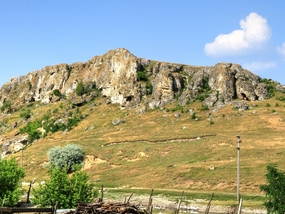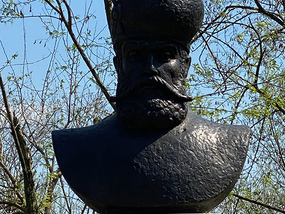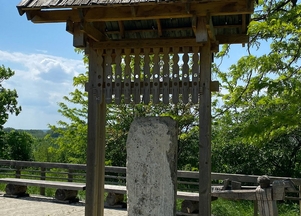Cobani
History
Officially, the village of Cobani is believed to have been founded in 1702, but it should be mentioned that the inhabitants who founded it moved here from another village, Zubreuți, later renamed Vasileuții de Jos. At the first documentary attestation, 03 June 1374, the village was called Zubreuți. In 1473, under the reign of Stephen the Great, we find it in documents with the name of Vasileuți. In another act issued by Eremia Movilă on 24 May 1602, the village was called Vasileuții pe Prut. Due to the floods caused by the repeated overflows of the Prut River, a large part of the inhabitants of the village moved to the present site of the village of Cobani. The relocation was due to the fact that the old village was located too close to the Prut and was constantly flooded when the Prut was overflowing. As a result, the villagers founded a new village 2 km away from the Prut river bank, on the right bank of the Camenca river, at the foot of the cliff, which was called Stânca Mare (The Big Rock). The last inhabitants were moved to the new site in 1812. Until the middle of the 19th century the village was also called Cubani. One of the most credible legends about the village explains why it is called Cubani. It is said that the ancestors of today's inhabitants lived in the village of Vasileuți on the banks of the Prut. And in order to cross the Prut, people had to pay money for crossing it on boats. These Vasileuți began to be called Vasileuți Cu Bani (with money). With the name Cubani the village passed through history until 1974, when the Soviet authorities by government decision for unclear reasons changed the name to Cobani. Documents, which would substantiate this government decision, weren't found neither in national nor in the party archives. But it is said that the name was changed in connection with the fact that there is a locality with this name in Russia.
We, the Cobanians had the honor, 421 years ago, to have Michael the Brave with his soldiers in Cobani, who made a stop in the village. This fact led the authorities to honour the great prince and the founder of the unification of the principalities in 1601 with his bronze bust, placed in the park in front of the town hall. The event was mentioned in a deed issued by Eremia Movilă on 24 May 1602, which states that in May 1600, the IV column of Michael the Brave's army, formed by Baba Novac's outlaws, had set up camp near Vasileuții on the Prut, not far from the Ștefănești fair. These documents were brought to light by Alexandru G. Gonța in his work "Data on the history of Romania, 14th - 17th century (1384 - 1625)", Bucharest, 1990, page 49. After the triumphal entry of Michael the Brave into Iași and his declaration as Lord of Wallachia, Transylvania and Moldavia and the flight of Eremia Movilă with the Polish army to Hotin, the fourth column, led by Baba Novac, set off in pursuit of the enemy. One of the trade roads connecting Iasi with Hotin passed near the village of Vasileuții on the Prut. The locals called this road the Hotin's path. Near the village, the Prut was crossed through Vadul Scruntari, which means "aired place". Here the banks of the river are more domed and seem to show the crossing place. Crossing the river through the ford, Baba Novac decides, after a long and forced march, to stop for a rest and regroup the army. For this, he chooses a field near the village of Vasileuti. Why did Michael's General choose this place? The field is dominated by two high mounds from which the surroundings can be surveyed for miles around. The western part of the field is bordered by the bridges on the Prut bank. At the border between the forest and the field are the "La fontal" springs with a high water flow, which in turn feed a lake, once large and rich in fish. The local peasants used to catch fish by hand until the flood dams were built in the 1960s. The eastern part of the field is welded by the tributary of the Prut, the Camenca river, in which horses could water and graze on the nearby pastures. The column led by Baba Novac was a cavalry corps. It is for these reasons that this field, which bears his name, was chosen.
In the popular memory of the village there is a story about Baba Novac field. People of Cobani, being asked about this field, why it is called Baba Novac (Baba Novic), answered that an old woman lived there. When asked when she lived and in what place, they shrugged their shoulders. In the mid-60s of the 20th century, the oldest woman in the village, Eudochia Lupușor, born in 1867, told us that her parents and grandparents mentioned a certain old man, Baba Novac, but nobody believed them, saying she was old and confused. In 2019, searching for documents and literature on the history of the village of Cobani, this document was found, brought to light by historian Alexandru G. Gonța and hence the connection with the name of the field Baba Novac.
Legend
Officially, the village of Cobani is believed to have been founded in 1702, but it should be mentioned that the inhabitants who founded it moved here from another village, Zubreuți, later renamed Vasileuții de Jos. At the first documentary attestation, 03 June 1374, the village was called Zubreuți. In 1473, under the reign of Stephen the Great, we find it in documents with the name of Vasileuți. In another act issued by Eremia Movilă on 24 May 1602, the village was called Vasileuții pe Prut.
Beautiful places

The wooden church of St. Archangels Michael and Gabriel
The church was built in 1838, being one of the oldest churches in the country, which has preserved its foundations and is surrounded by a stone wall. It was recently renovated on the outside.
Read more
One Hundred Mounds
The natural monument "One hundred mounds" is located between the villages of Cobani and Braniște. It represents a hilly landscape along the Prut and occupies six terraces near the Prut. It is the only place in Europe, where the sediments of the ancient seas, which once bathed this territory - the Tortonian and Sarmatian Seas - are concentrated.
Read more
Big Rock
The range of rocks near the village consists of 3 parts, of which the one that lies directly above the village and the valley of the river Camenca is called Stânca Mare (Big Rock), having a length of over 1000 m, width of 100 m and relative height of 40 m. The Camenca River hugs the reef from three streams. This natural fortress was inhabited by humans in the Stone Age.
Read more
Mihai Viteazul Monument
We, the Cobanians had the honor 421 years ago, to have Michael the Brave with his soldiers in Cobani, who made a stop in the village. This fact led the authorities to honour the great prince and the founder of the unification of the principalities in 1601 with his bronze bust, placed in the park in front of the town hall.
Read moreVideo presentation
In the following video presentation, you will be invited to discover the beauty of the banks of the Prut River in the Republic of Moldova. This picturesque area is known for its idyllic landscapes, where the river Prut flows quietly through the hills
photos by Iurie Sveț – www.hikeme.club


 ro
ro
 ru
ru




















